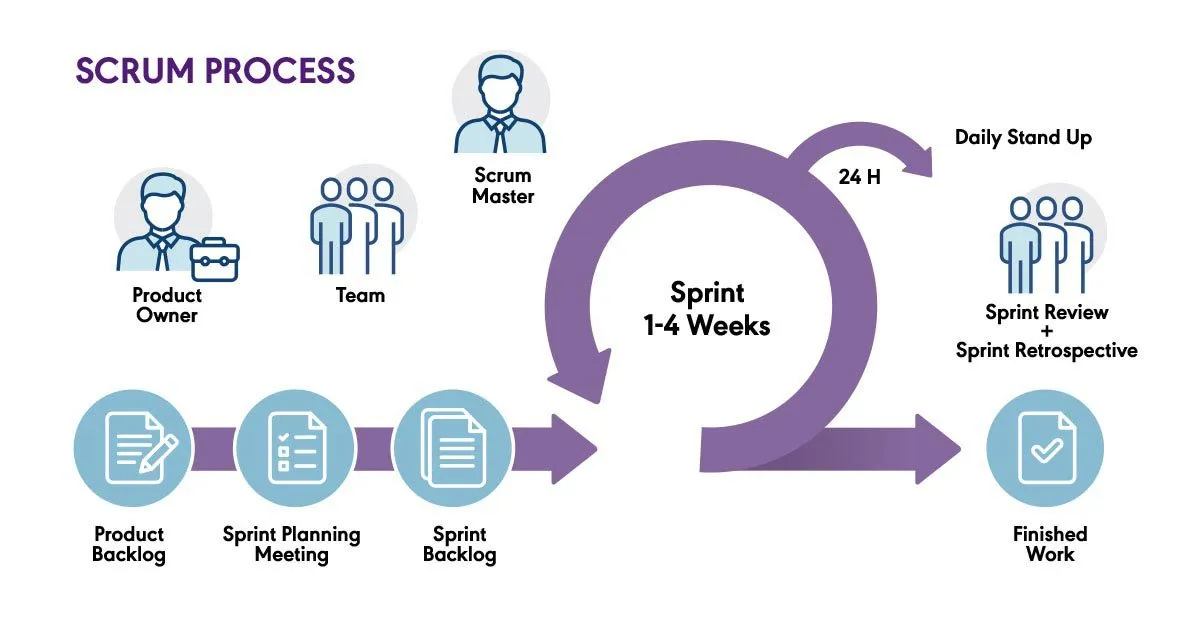Module 10: Cybersecurity & Modern JavaScript (ES6)
Agile Project Management

Agile is a project management approach that values individuals and interactions, working software, customer collaboration, and responding to change. Two common Agile frameworks are:
- Scrum: Uses fixed-length sprints (e.g., 2 weeks), daily stand-ups, a product backlog, sprint planning, and retrospectives. Roles include Scrum Master and Product Owner.
- Kanban: A visual workflow approach using a board with columns (e.g., "To Do", "In Progress", "Done"). Work is pulled through the system without fixed-length sprints.
Scrum emphasizes structured roles and timelines, while Kanban focuses on continuous delivery and limiting work-in-progress.
HTTP vs HTTPS
HTTP (Hypertext Transfer Protocol) is a communication protocol for web requests. It sends data in plaintext, which can be intercepted.
HTTPS is the secure version of HTTP. It uses SSL/TLS encryption to protect data between the browser and server.
- Encrypts sensitive data like passwords and credit cards
- Prevents man-in-the-middle attacks
- Improves trust (browsers show a padlock)
Always use HTTPS when sending login info or handling user data.
How to Securely Send a Request
- Always use
https:// in API requests
- Use tokens (JWT, OAuth) to authenticate users
- Set HTTP-only, Secure cookies to prevent JS access
- Enable CORS properly to control allowed origins
// Example: Sending a secure fetch request
fetch("https://api.example.com/data", {
method: "POST",
headers: {
"Content-Type": "application/json",
"Authorization": "Bearer yourTokenHere"
},
body: JSON.stringify({ name: "Alex" })
});
Preventing Form Spam
To reduce spam and abuse in web forms, consider these protections:
- reCAPTCHA: Use Google's invisible reCAPTCHA to verify humans
- Input validation: Sanitize and validate inputs server-side
- Rate limiting: Limit requests per IP (e.g., 10 per minute)
- CSRF protection: Use tokens to ensure requests are coming from trusted sessions
- Honeypots: Hidden fields that bots fill but users never see
Hashing
Hashing is a one-way transformation of data to a fixed output. It’s used for securely storing passwords and ensuring data integrity.
SHA-256 is a common secure hashing algorithm- Hashes are irreversible and unique (ideally)
- Used in digital signatures, password storage, etc.
ES6: Template Literals
Template literals let you embed expressions and span multiple lines using backticks:
ES6: Destructuring
Destructuring lets you unpack values from arrays or objects into variables.
ES6: Spread & Rest
Spread copies values into a new array/object. Rest collects multiple values into one.
ES6: Arrow Functions
Arrow functions are shorter and use the outer this context.
ES6: Closures
Closures let inner functions access variables from the outer scope even after the outer function has finished running.
ES6: Scope Differences
var is function-scoped. let and const are block-scoped. Use const by default.
